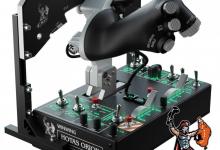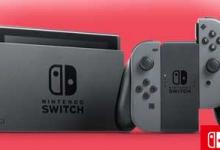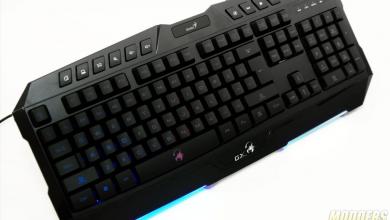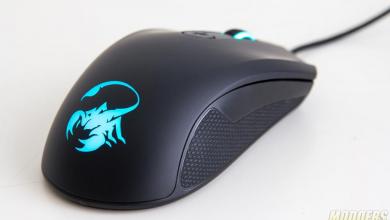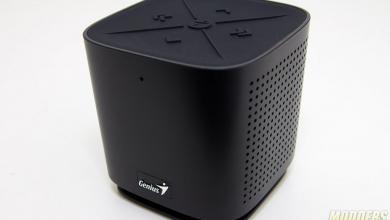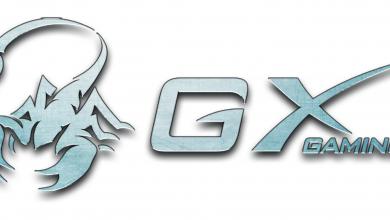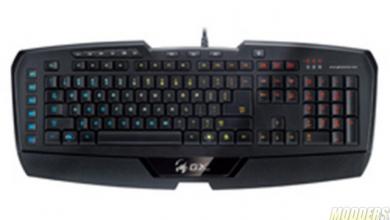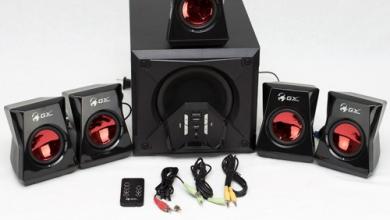Genius F-1000 Gaming Arcade Stick Review
Technical Overview for Modding
A certain degree of “modding” is necessary when it comes to arcade sticks as they wear out much faster than a gaming mouse or keyboard for example. Obviously being a budget arcade stick, quick disconnects for quick parts replacement is absent and all the connections are soldered in place. This requires a little bit extra effort to mod but far from impossible. First let us look at the individual parts and what can or cannot be replaced.
Two custom PCBs which house the function buttons are attached to the housing unit. The larger PCB controls all the functions and has the interface while a smaller PCB connected by ribbon wire is simply an extension for housing the SELECT and START buttons.
The smaller function buttons use a HiMAKE clicky micro-switch directly soldered to the PCB with 15mm diameter spring-loaded buttons. The “clicky” aspect also makes them terrible for rapid input (think of this switch behaving like a mouse switch) as the tactile actuation slows down consecutive input. None of these smaller buttons will see much heavy use outside of the SELECT and START buttons so they are a lot less likely to need replacement or required to be pressed rapidly thankfully with the exception of a few non-fighting arcade games for which I just recommend remapping the other action buttons to perform the function via the service menu/emulator options.
The action buttons are a lot easier to service thankfully, even if we do need to break out the soldering iron since they are soldered by wire.The PCB has the chip-on-board on the left edge with the markers on the solder connection points so there will not be any confusion if swapping wires or re-soldering down the road. The rest of the PCB is blank with the exception of the remaining bank of HiMAKE switches for the main function buttons.
The action buttons use some sort of simplified linear ALPS clone switch. Since the micro-switches are from HiMAKE, I am assuming these are Hua-Jie micro-switches (since they own the HiMAKE brand) and these parts were most likely ordered from the same place when they were making this arcade stick. To be honest, I am not anal about which specific ALPS clone this really is since ALPS activation travel is really low so I am not concerned with knowing exact actuation force like I would with a keyboard. Coupled with this particular ALPS clone switch being linear (non-clicky), this makes for a good fighting game button because rapid input is easier (essential for Chun-Li’s leg-loop combos).
If I had to be nitpicky though, the problem would be the button cylinder housing itself not necessarily the switch, which is understandably not the best quality and sometimes sticks when pressed off-center, especially button #6 at the edge (since it is the farthest). The housing is a simple one-way dual-latch snap-in and the button mounting hole can fit a standard Sanwa 30mm button in case you need to replace it with something better in the future. The screw-in type is the more typical button lock rather than the snap in as they are generally tougher and easier to swap out.
As for the joystick, obviously you can just replace the ball-top any time by unscrewing it from the shaft without opening the service area. This could be for purely cosmetic reasons or in case you want to attach a shaft extender, replacement parts can be easily ordered and installed for these. Underneath the hood, the initial assumption of a square-gate is correct and this gate actually has support struts that prop the joystick from the metal plate base. These are simply additional support as the joystick is screwed in place so do not worry, this means that you can replace the base or the entire joystick unit entirely with a better one if you need or want to. Also, the 5cm mounting depth means greater compatibility with various after-market stick selections.
In case you are not familiar with joystick parts and how they work, there are basically 3 main pieces in a joystick: The gate (the plastic thing with the square in the middle), micro-switches (the four black pieces where the wires are connected to) and the actual stick with shaft. The shaft obviously is the control piece and whenever users move it in the directions they want to, the gray thing on the micro-switches are depressed either one at a time (4-way for older games) or two at a time (8-way, for fighting games which requires precision).
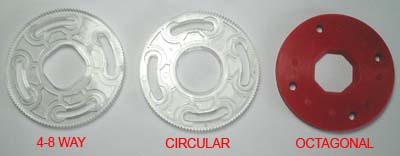
The gate or restrictor is basically a stopper that does two things: it limits the joystick movement so that the switches are not depressed too hard (therefore the switches last longer) and it dictates what kind range of motion or feel should the stick have. There are three common types of gates. Square gate, which you see is the default gate style in the F-1000, limits the contact area into a small square. These are ideal for most adventure arcade games and ok for fighting games if you can adapt to it. The problem with this type of gate for fighting games is that the bottom-out corner input positions are farther distance than the north, south, east, or west positions. Players who are heavy handed will find it hard to adapt to this gate style. On some joystick models (not on the F-1000 unfortunately), the square gate can be repositioned as a diamond gate, ideal for much older (think late 70’s, early 80’s) arcade games since it funnels the direction to a 4-way bias. Round gates, commonly used in American-style fighting arcade units, solves this by having equal input distance for all corners. The downside with round gates however is that users cannot feel the corners so input precision is given up for the sake of speed. Users can also remove the gate entirely but this means the wear-and-tear is greater on the micro-switches plus the joystick range would be large that it will take a lot longer to do 360-motion or even quarter-circle “Hadouken” motions compared to gated inputs so this is not advisable. Lastly, the octagonal gate bridges the other two gate types and provides speed as well as tactile corner positioning for those who require it.
On the Genius F1000, joystick uses DICGU VM series micro switches (3A version). This is a typical joystick controller micro-switch part utilizing deflecting metal plates inside with a PBT button and if you take apart most arcades, it will use varying brands of this type of micro-switch like Cherry D44X or Sanwa MS (both of which are more expensive). Although the DICGU VM micro switches have a mechanical service life of 1,000,000 cycles which pales in comparison to other low-priced non-Japanese VM series switches from Zippy or Yenox which have a mechanical service life of 10,000,000 cycles. The DICGU VM switch used in the F1000 in particular is tactile and has an audible clicking sound. Silent and smoother (linear) switches for joysticks are also available in case you need to replace individual micro-switches. You can also just replace the entire stick unit entirely as higher-quality kits are readily available.
